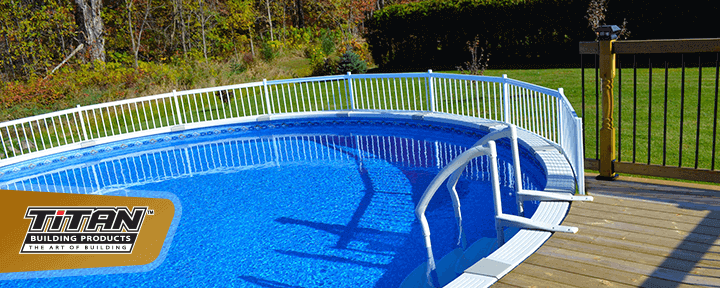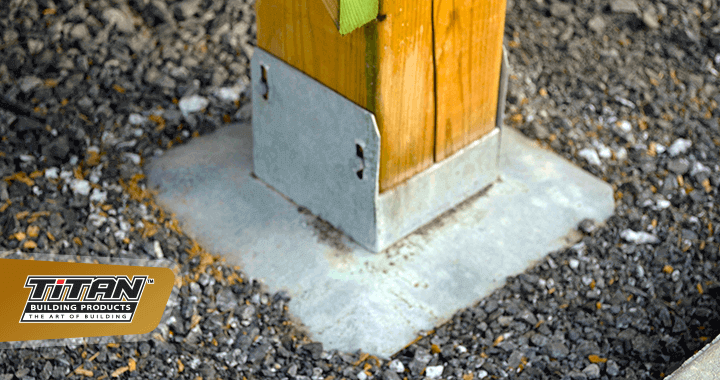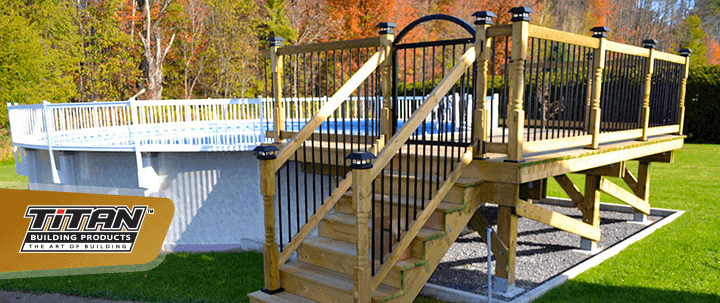A free standing deck with footings more secure and better looking than blocks but a fraction of the cost of poured concrete.
Some decks just don’t have to be built on traditional concrete footings. These are called floating decks because they are free standing and not attached to any thing else. They move with the surface of the soil if it expands from frost in the winter and descend when it thaws.
Not every deck can or should be free standing. Sometimes you absolutely need a structure that is as immobile as the house it is attached to. But for most residential decks, including pool decks like this, attaching to the house is not needed or recommended.
Ledger connections require breaking the waterproof envelope of the house so it has to be flashed, sealed and connected properly or you will have major problems.

The Least Expensive Option Is Not Always An Option
Of course concrete blocks are the least expensive way to do this and they have earned a spot in the market place. But while they are only about $7-$8 each, they are not a silver bullet. The structure is only held in place by its own weight. Many areas subject to high winds prohibit surface resting footings unless the entire deck is strapped with cables and spiked into the ground.
Or Spare No Expense And Effort - Poured Concrete Footings?
Brian White found himself looking at this very question. How should he build his above ground pool deck? Should he use low cost blocks or high cost high labor poured footings?
His research led him to a perfect compromise. The Deck Foot Anchor was his choice. He wanted something much more secure and better looking than blocks but he did not want to pay the expense and labor of digging and mixing concrete.
Nor did he have to. The pool deck was five feet high and with bracing became a rigid rock solid structure. He prepared the surface by removing the sod and built a small stone retaining curb. He put down ½” crushed stone about 3″ deep and compacted it and made it level.

Ready For The Ride
This deck is securely anchored to the ground and in the winter when the soil freezes and expands, the footings will remain secured to the top surface but still anchored. The entire deck will rise about ½” and then settle back down when the thaw comes.
Any free standing floating deck should be set away from the house or the pool in this case by about 1” to allow for that annual movement.
Brian was proud to show off his handy work to us and we were happy to see another homeowner build a successful project easier and for less money than some of the other options available. If you are building a deck or a shed and it does not have to be attached to your home, but you want it securely anchored to the ground, check out the Deck Foot anchor and see if it makes sense for your project.

